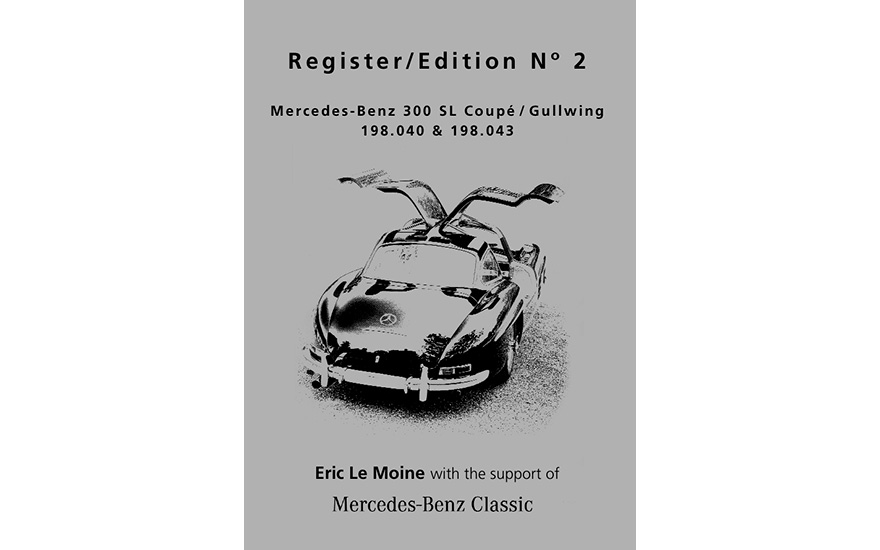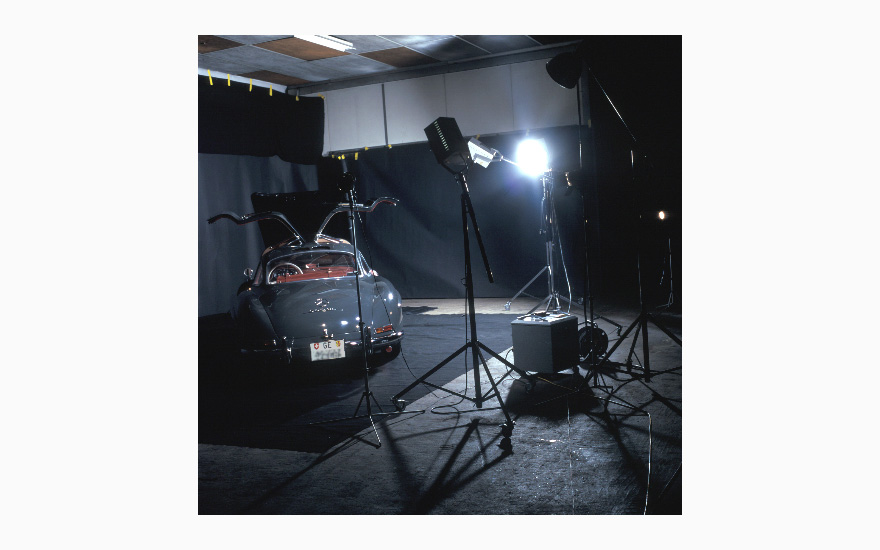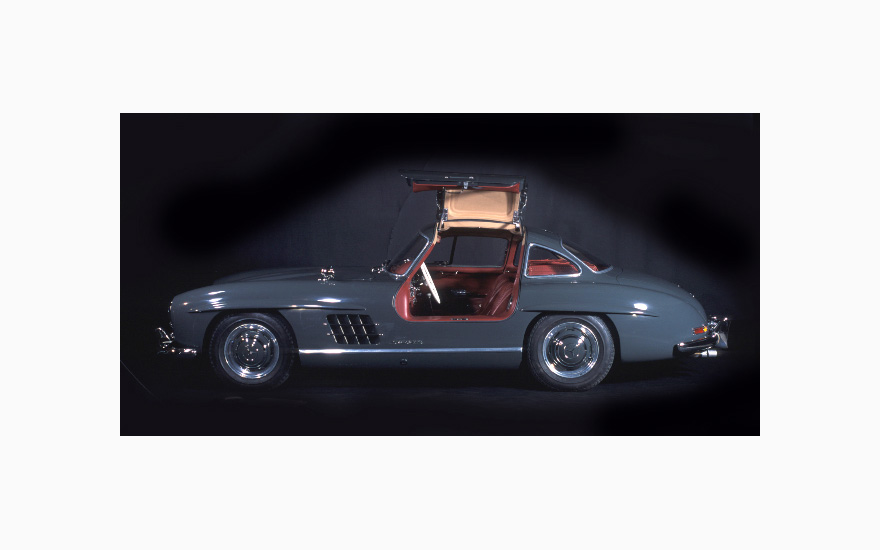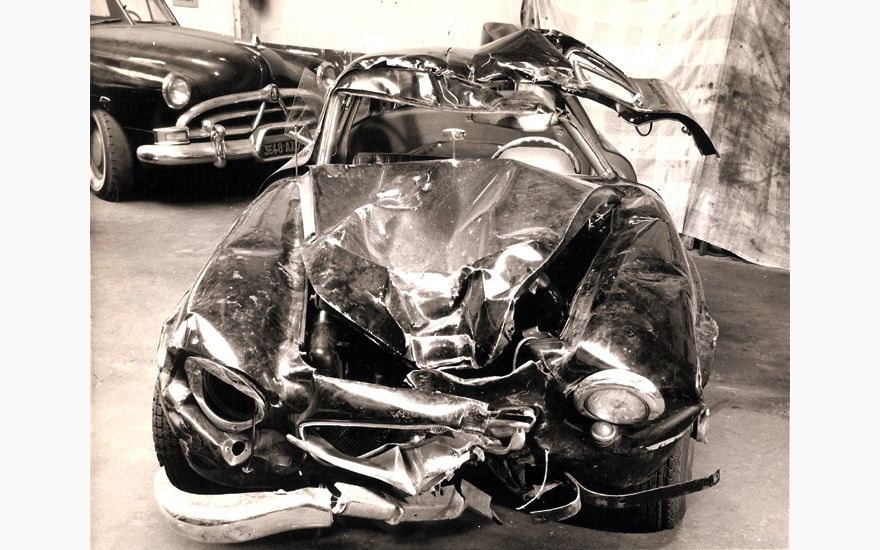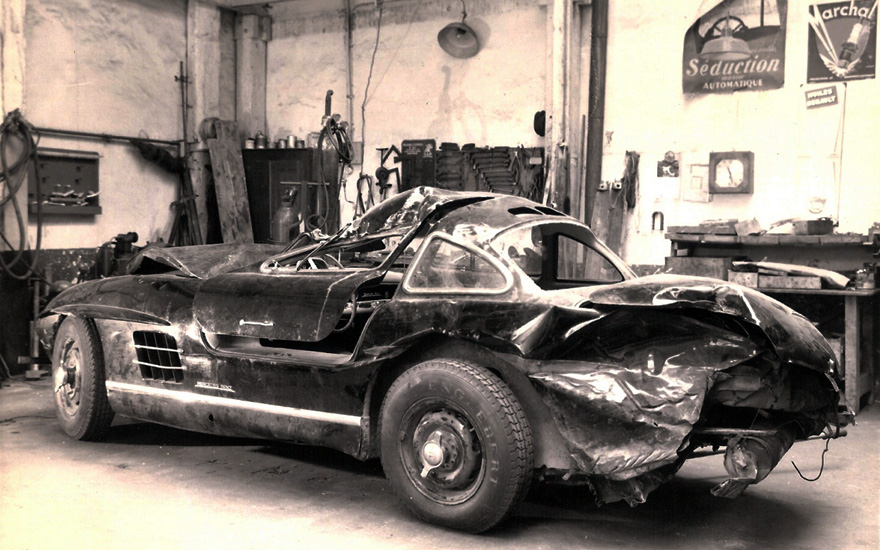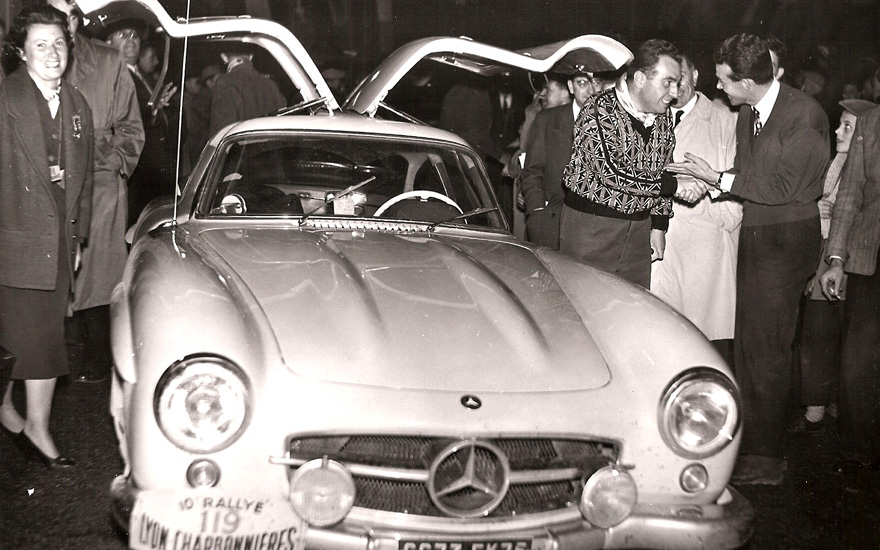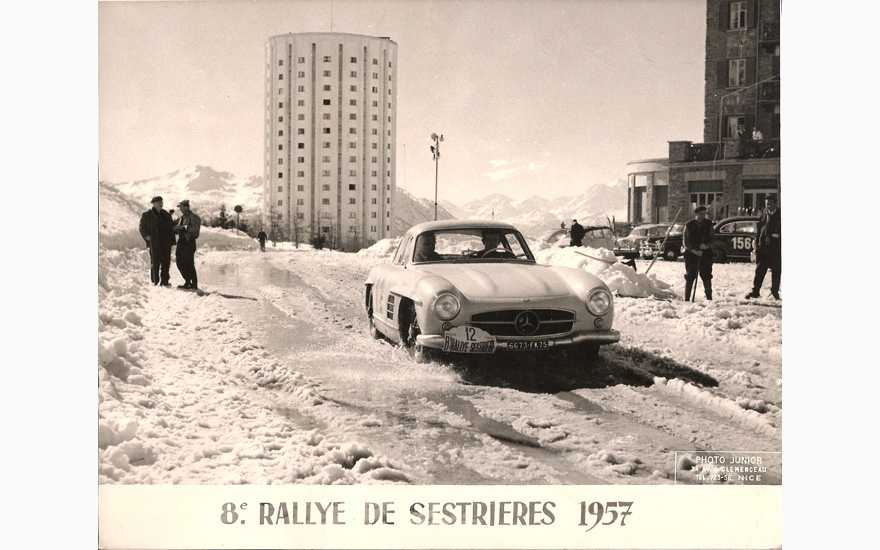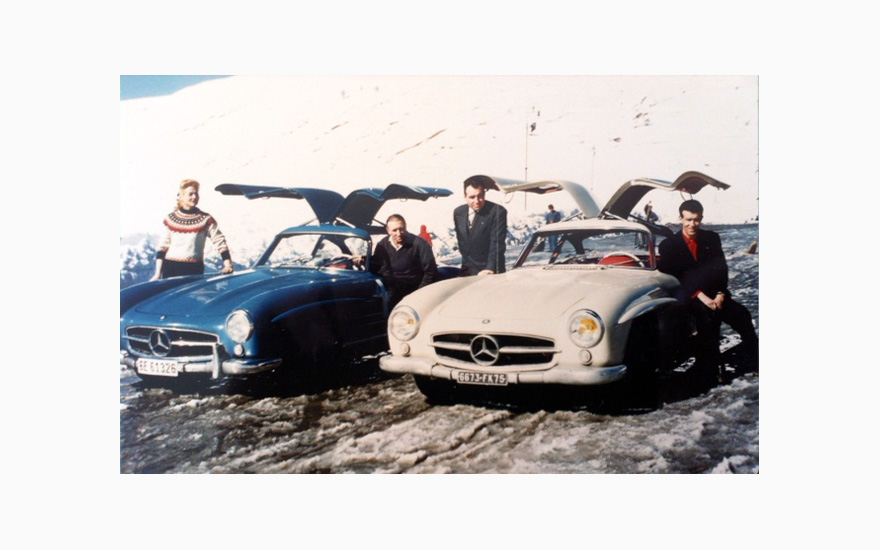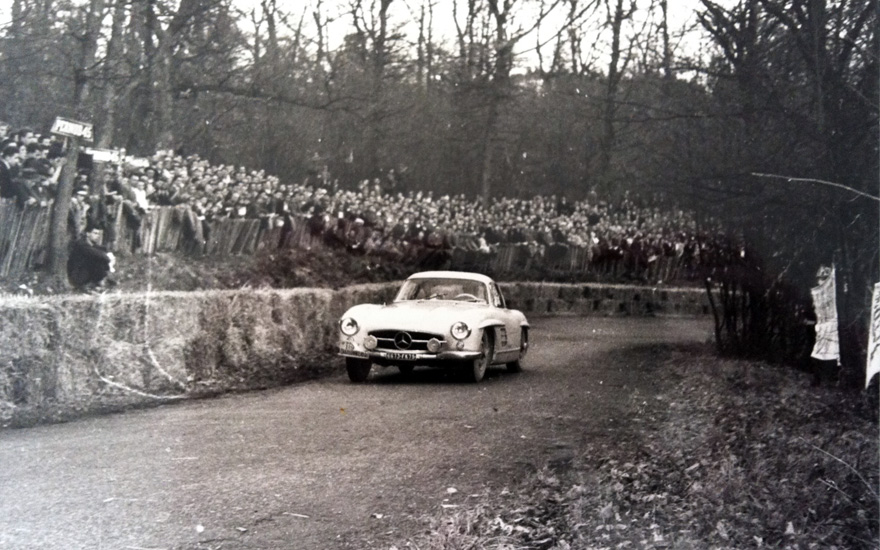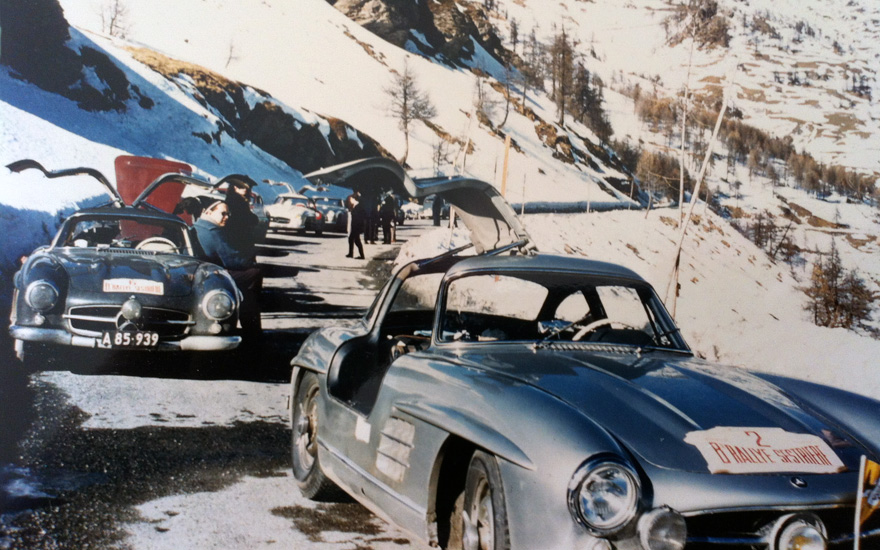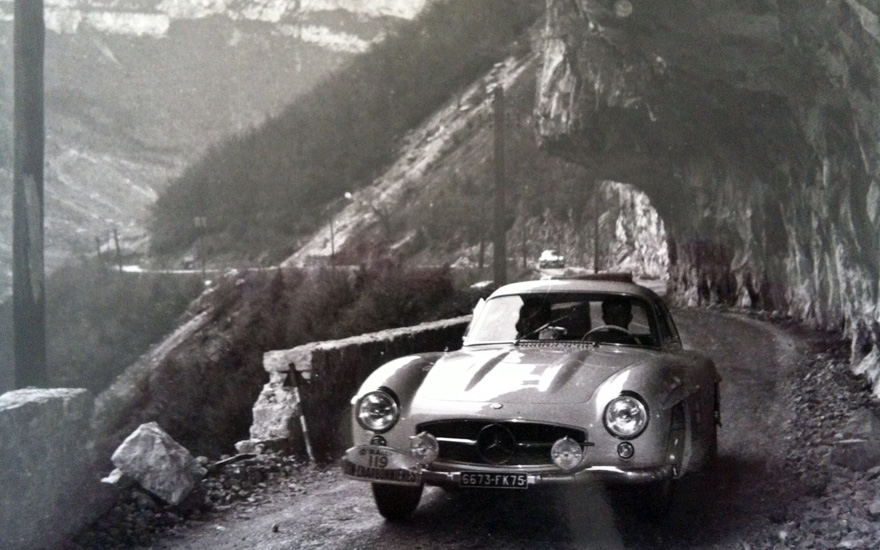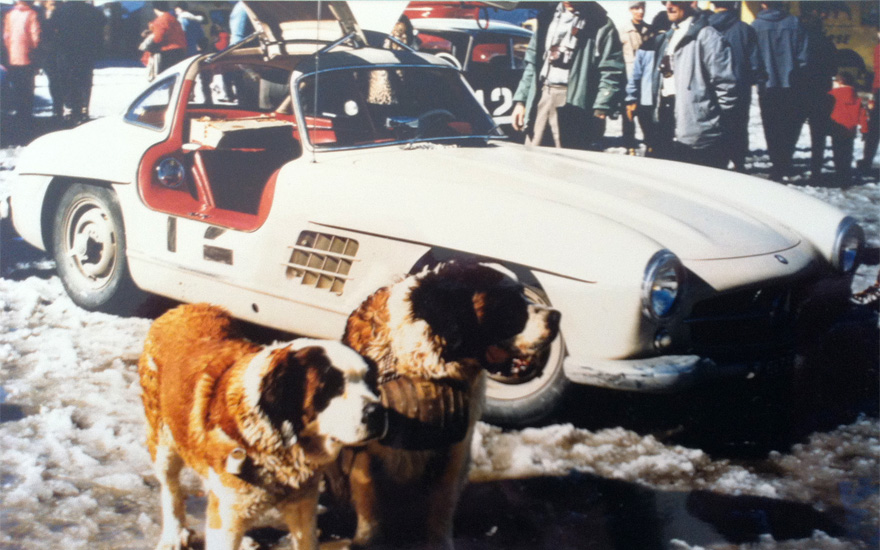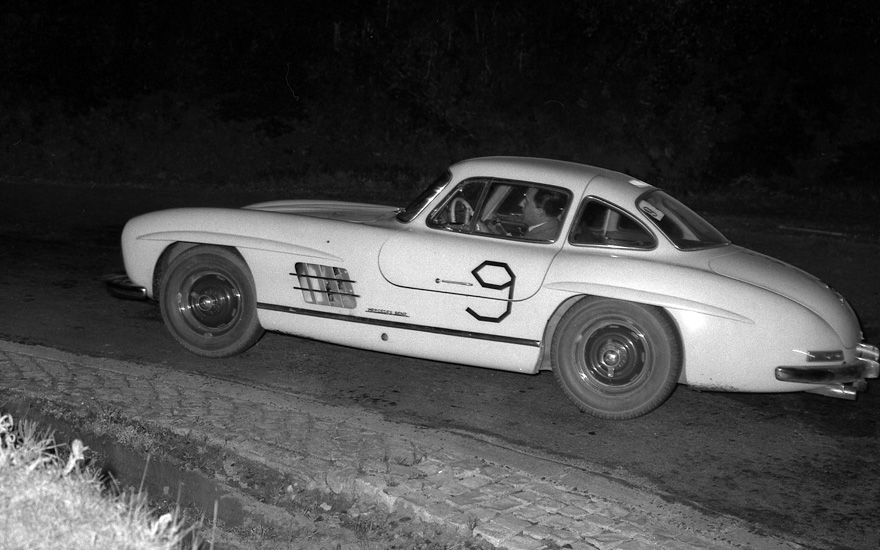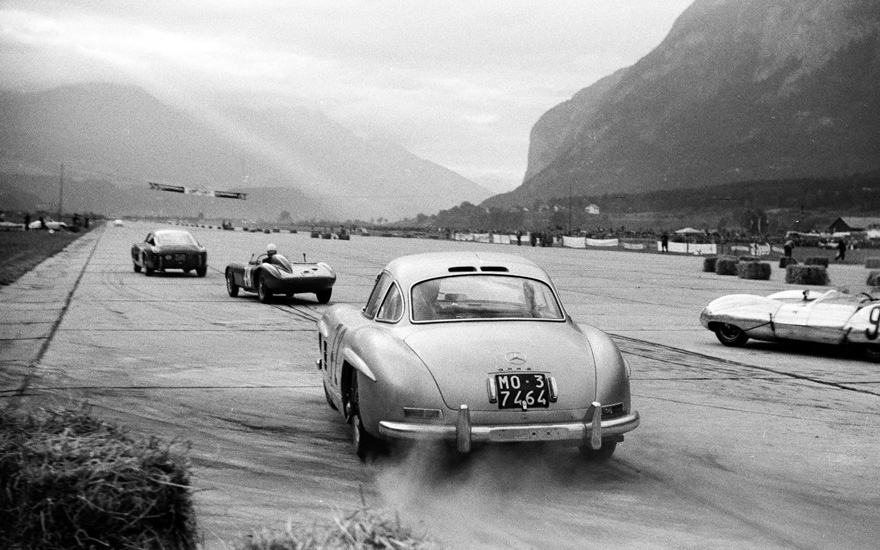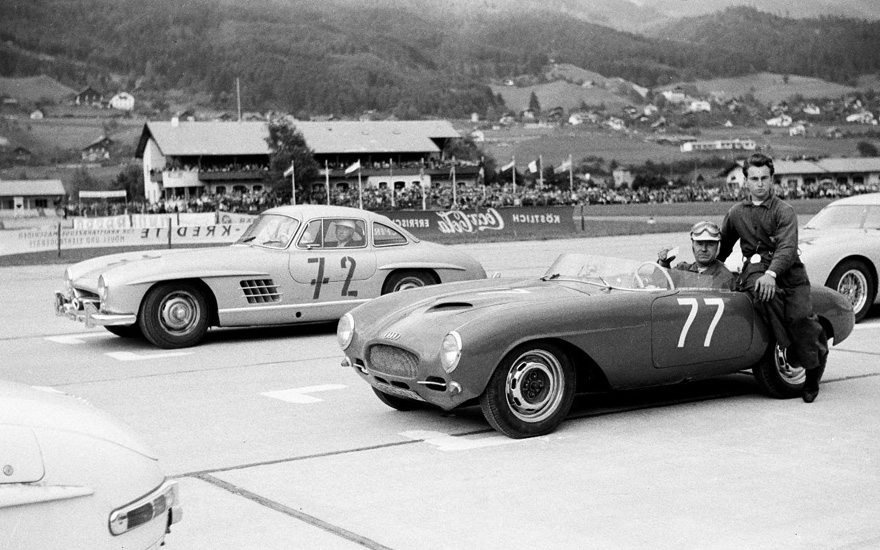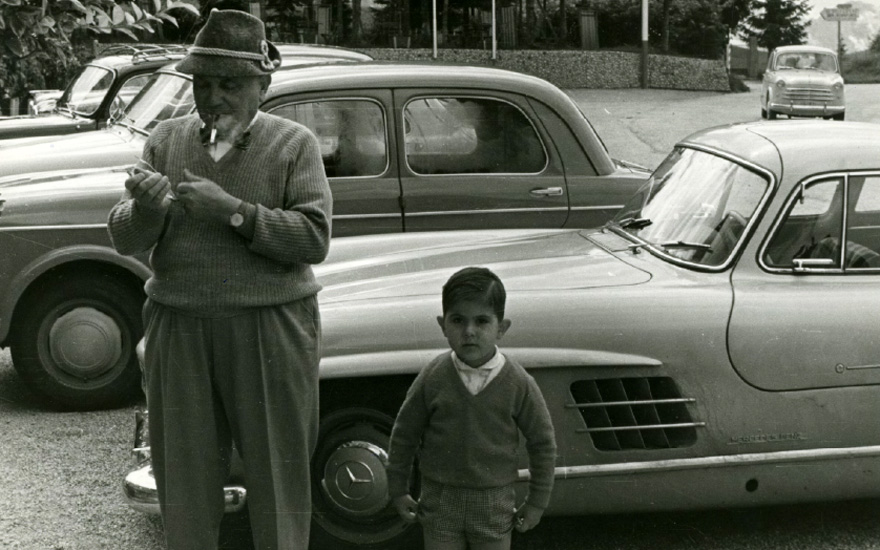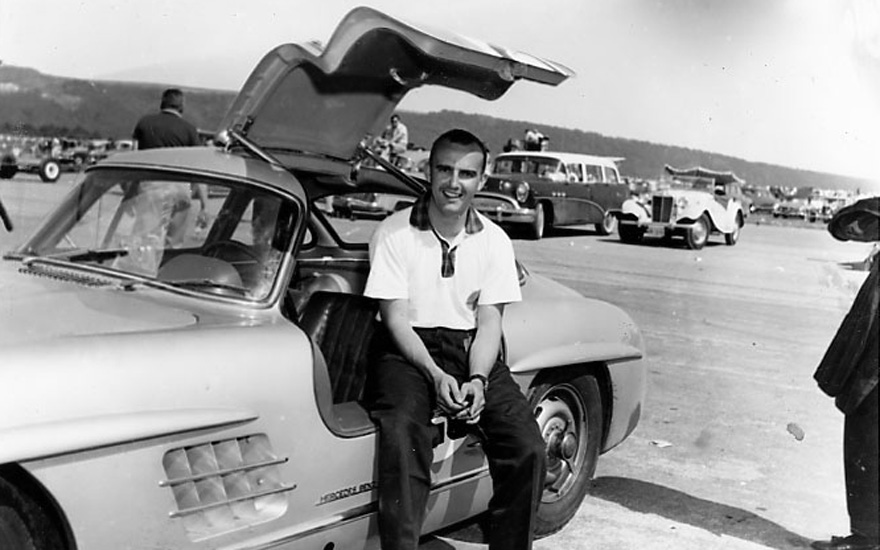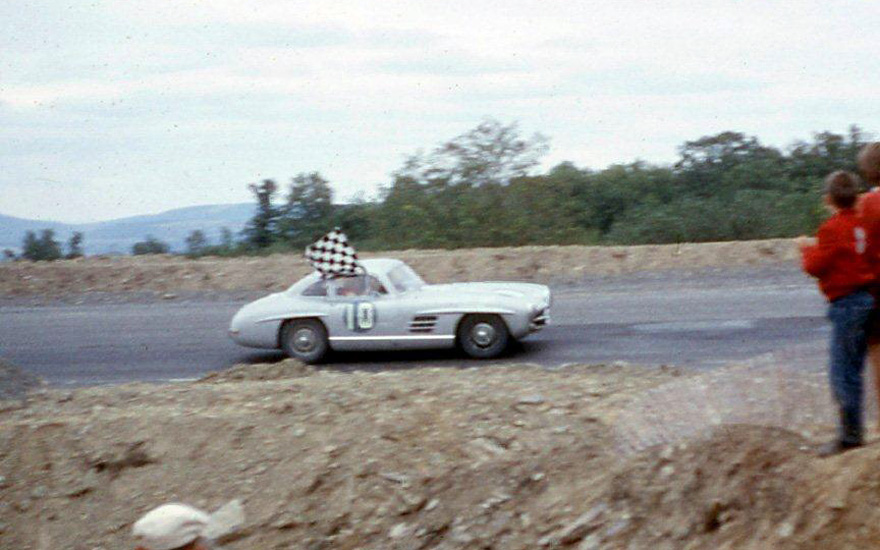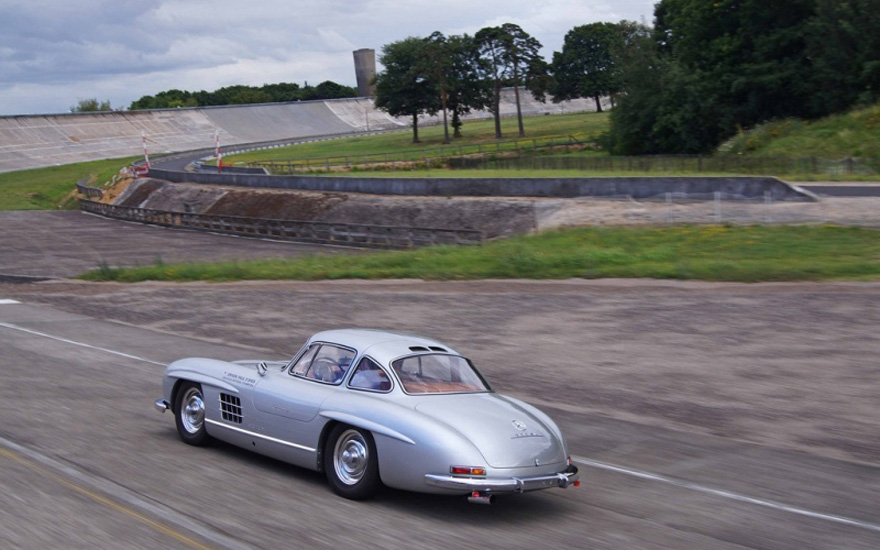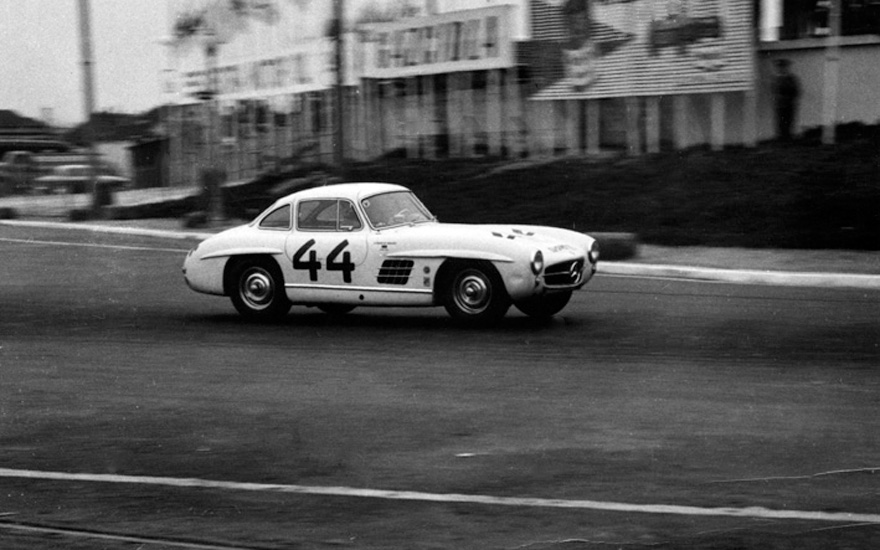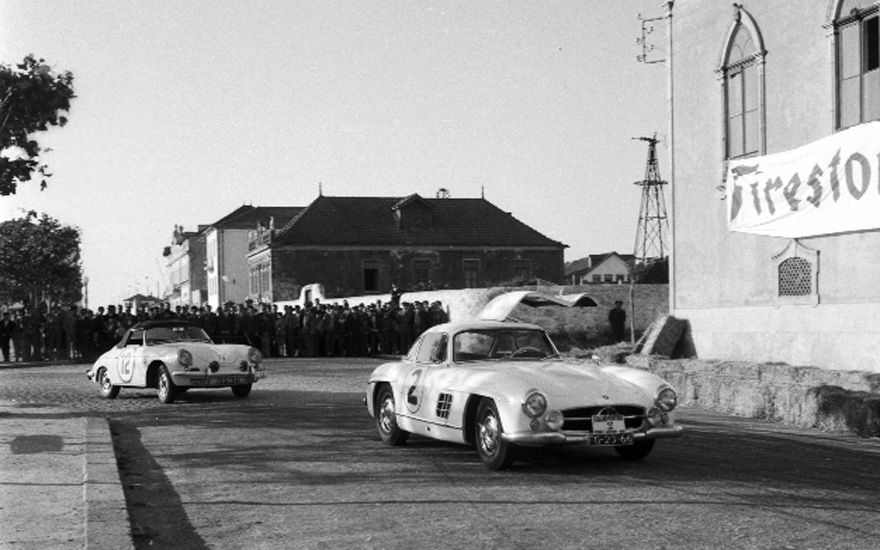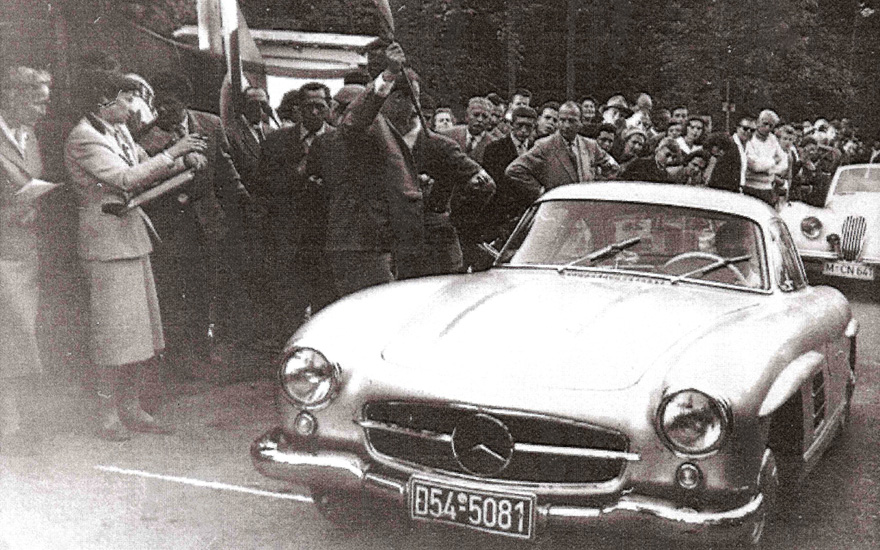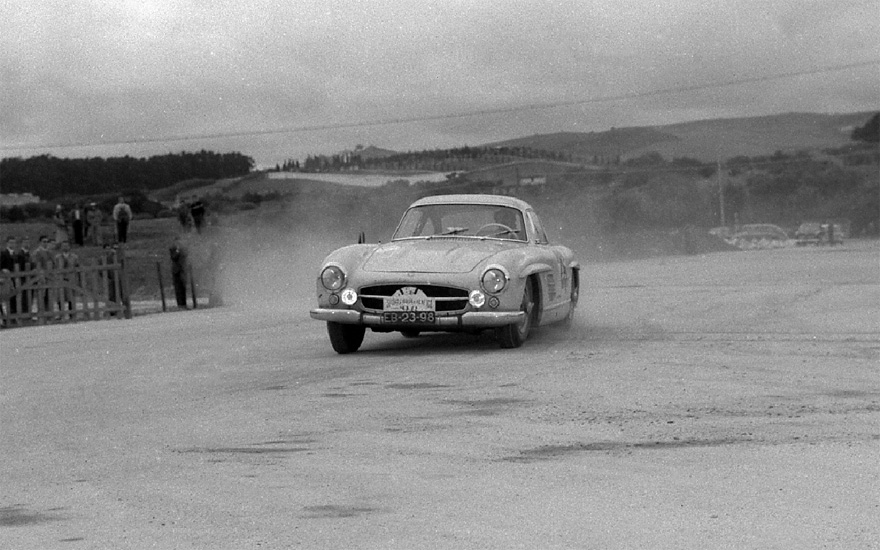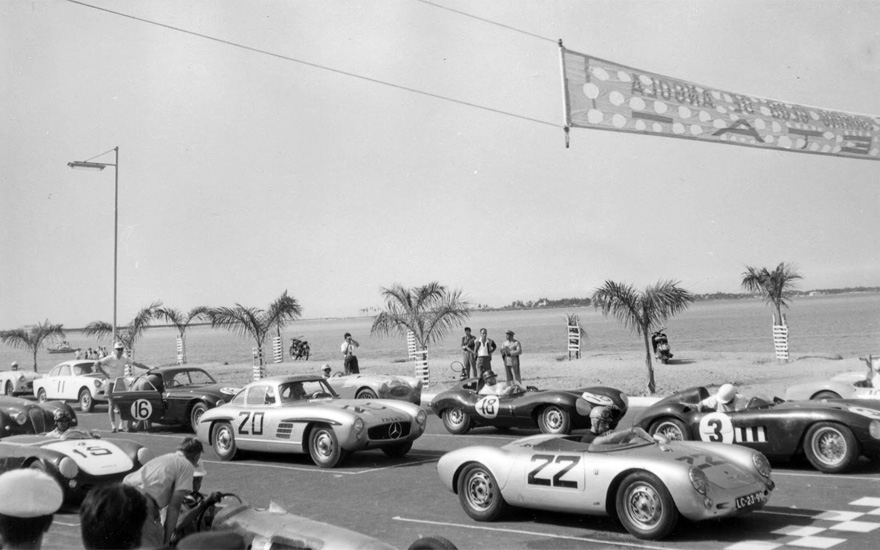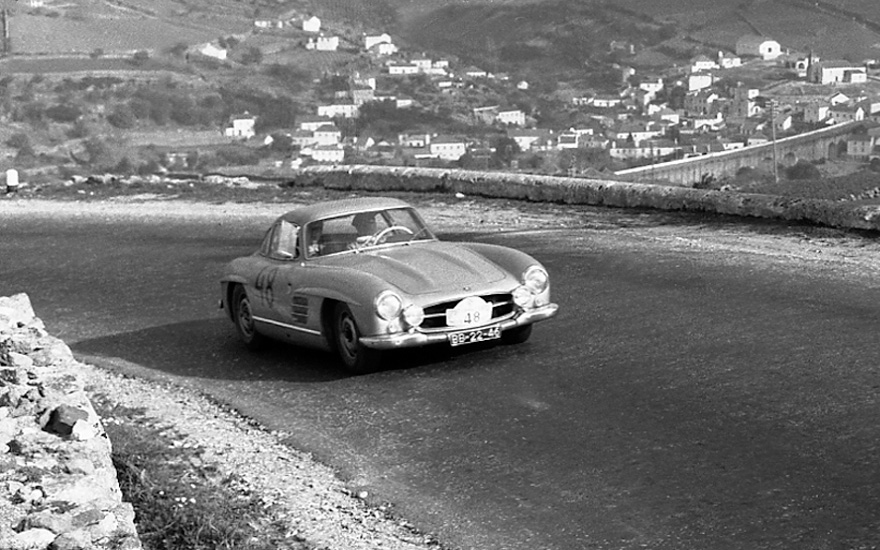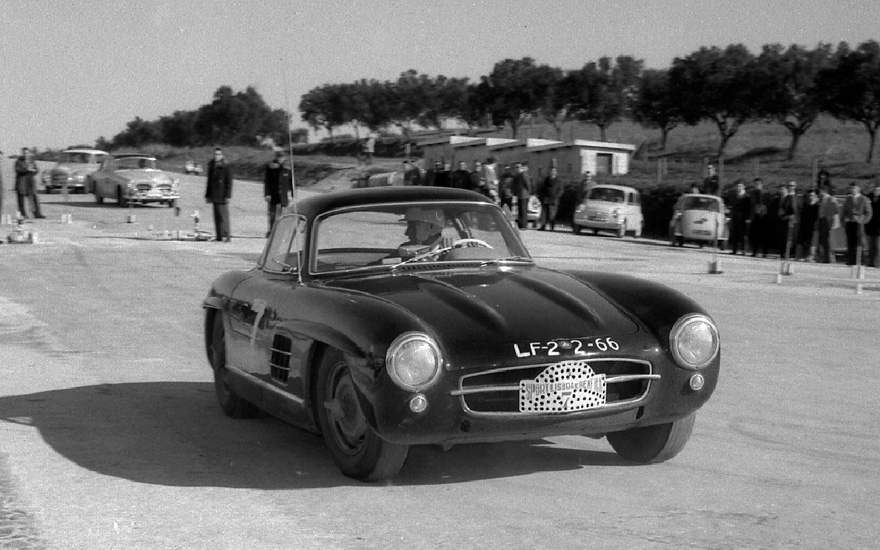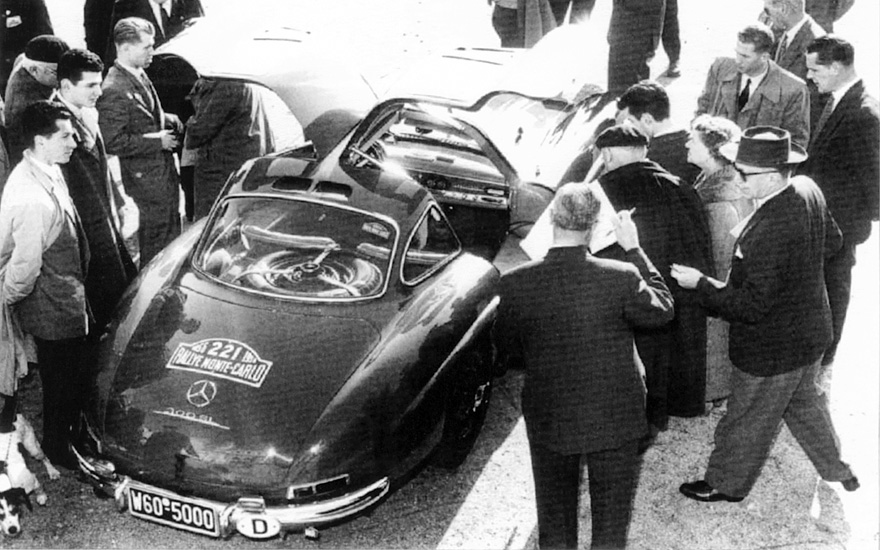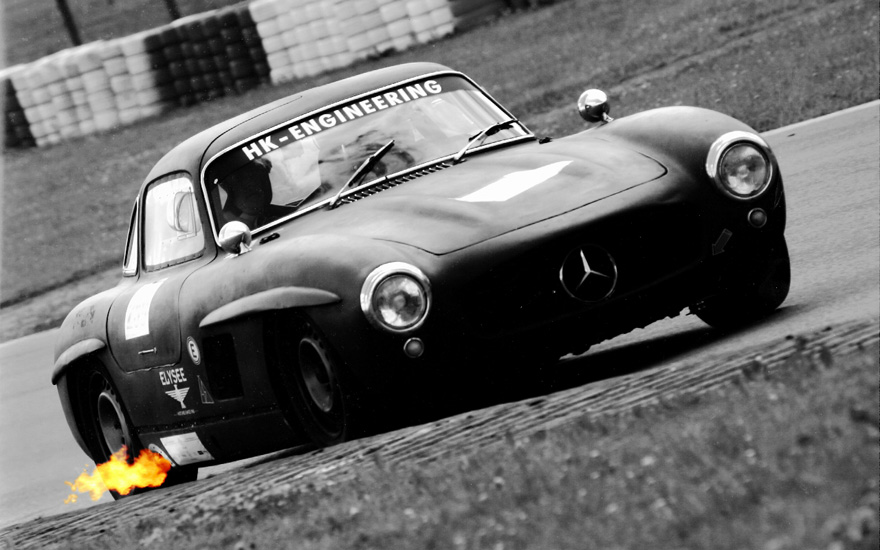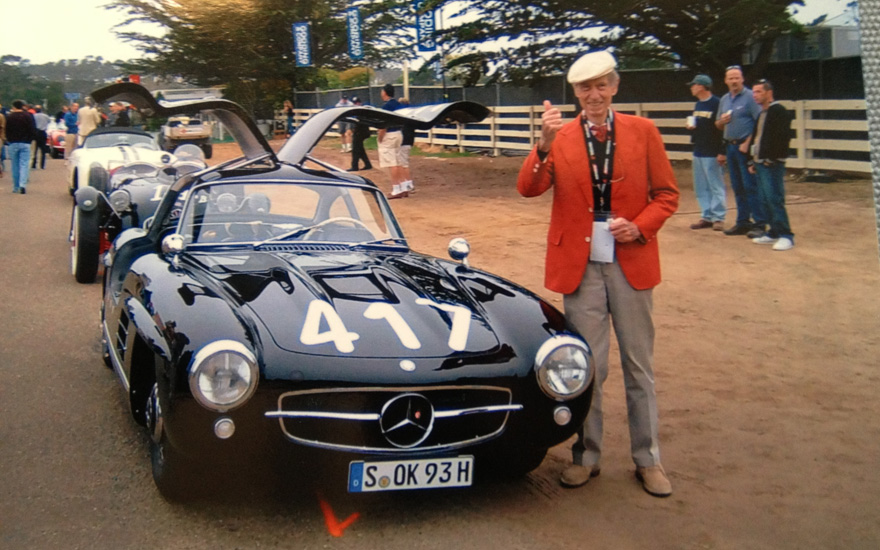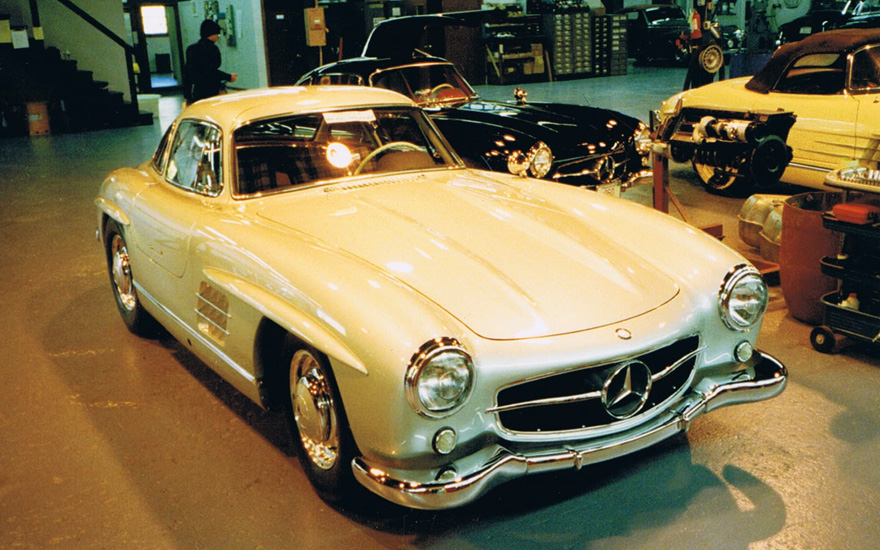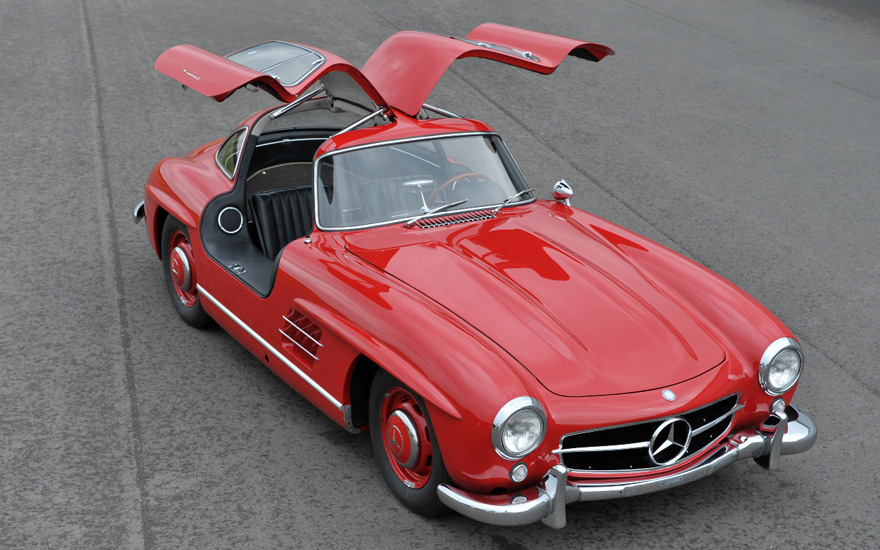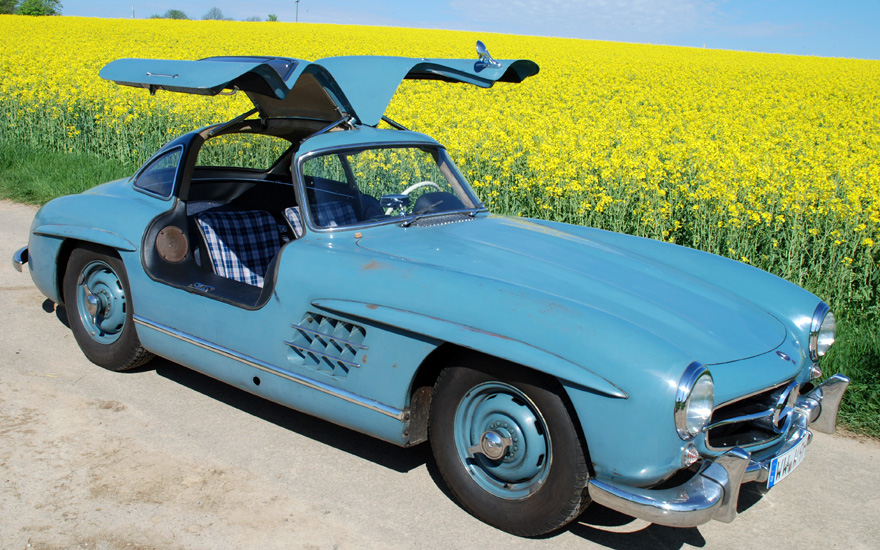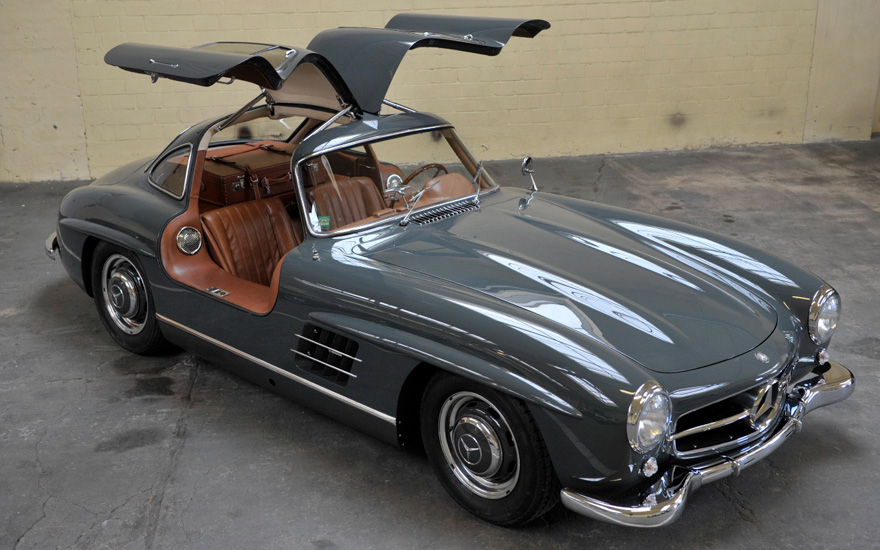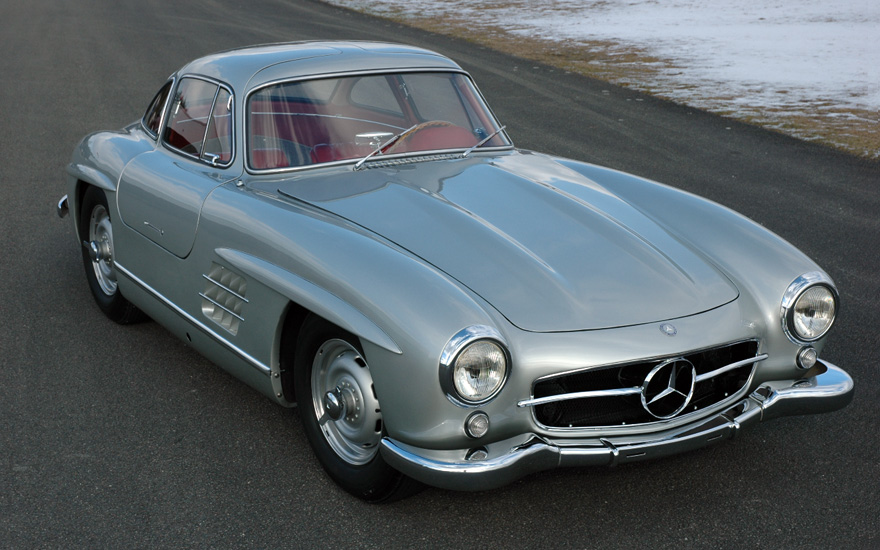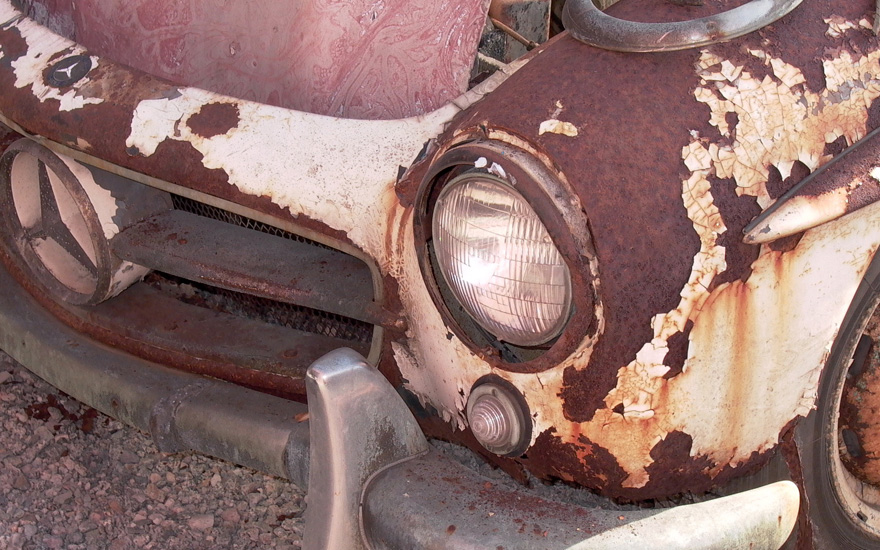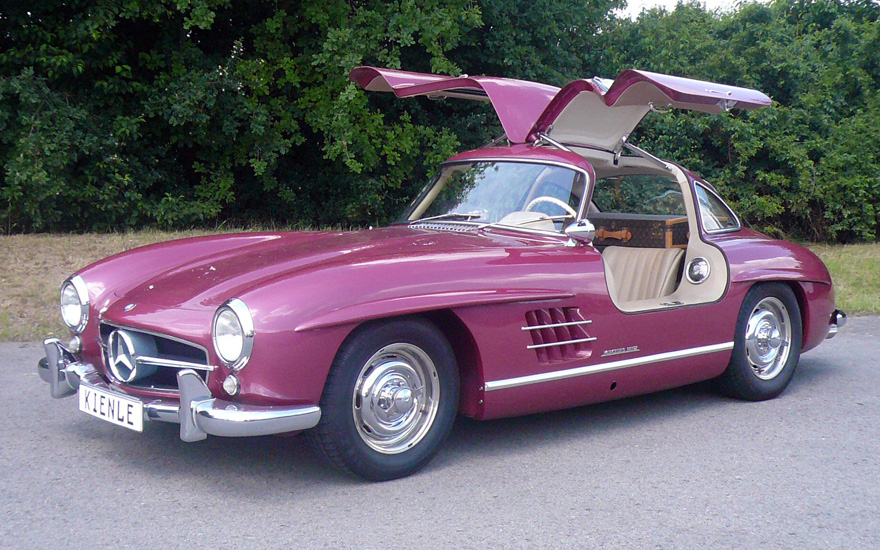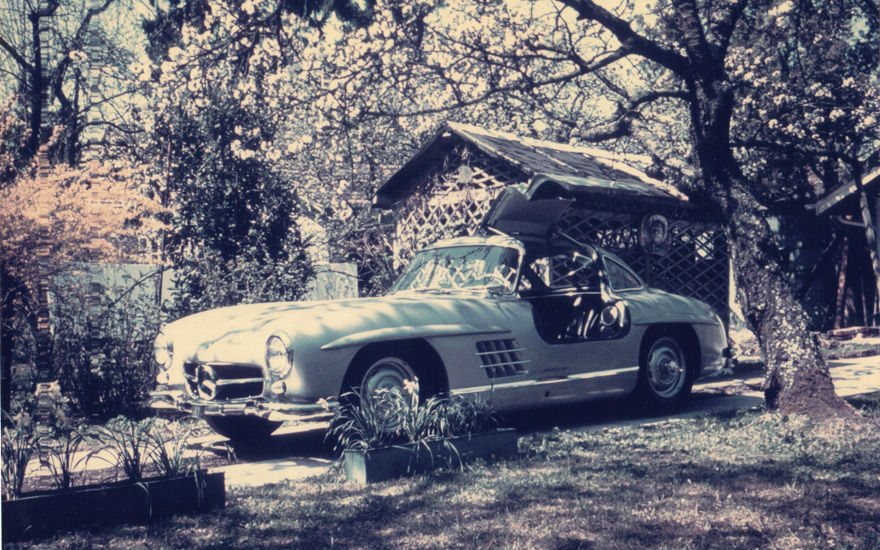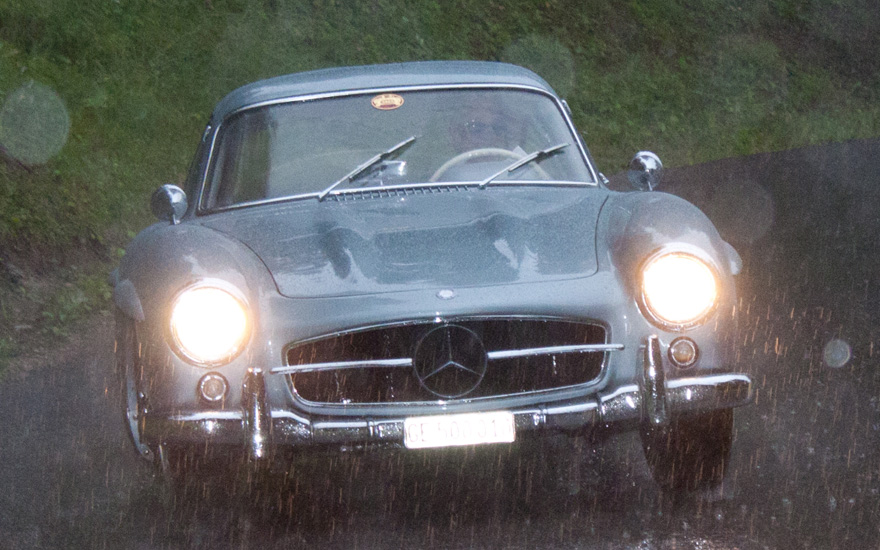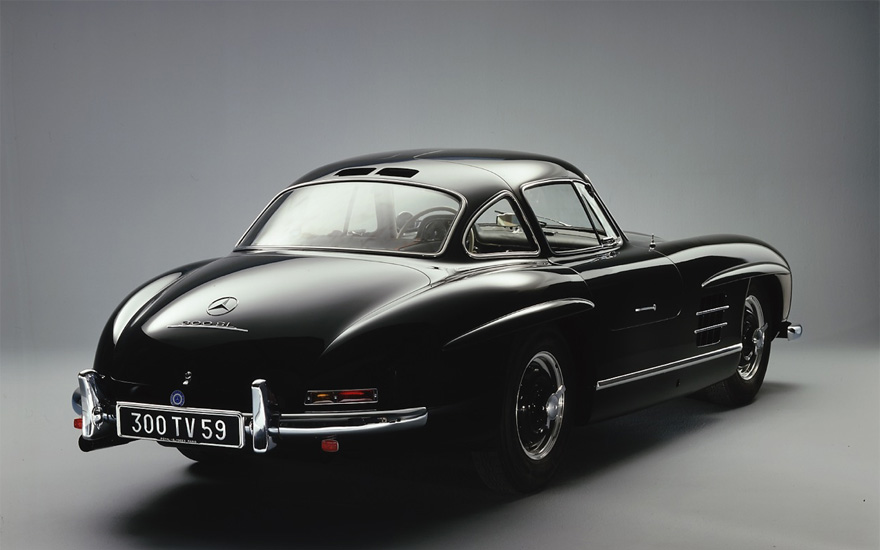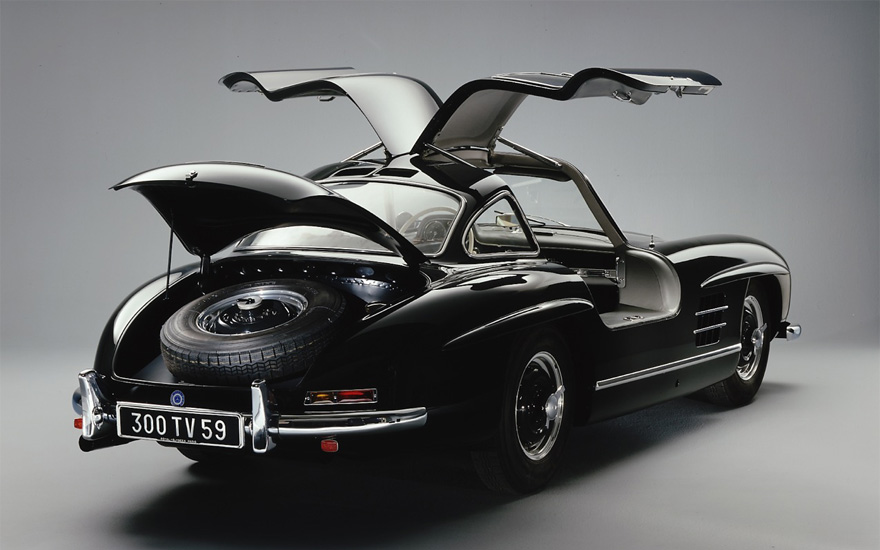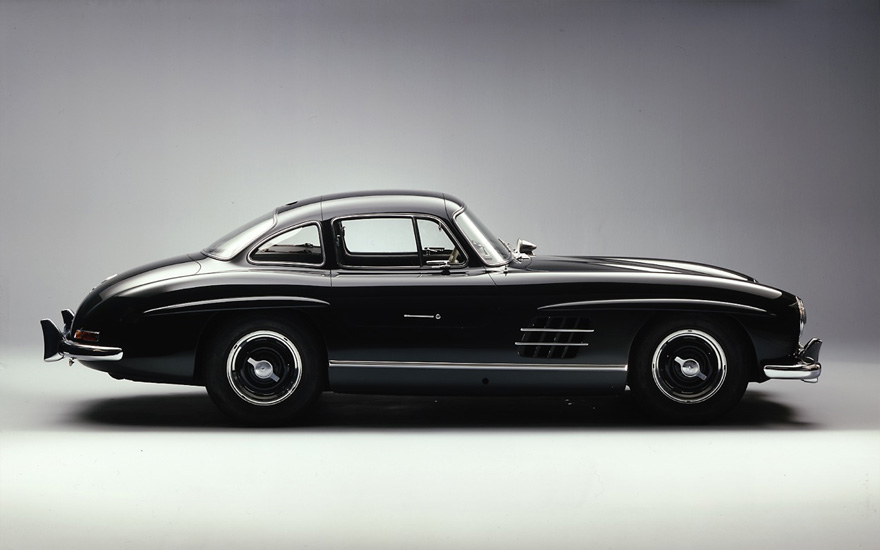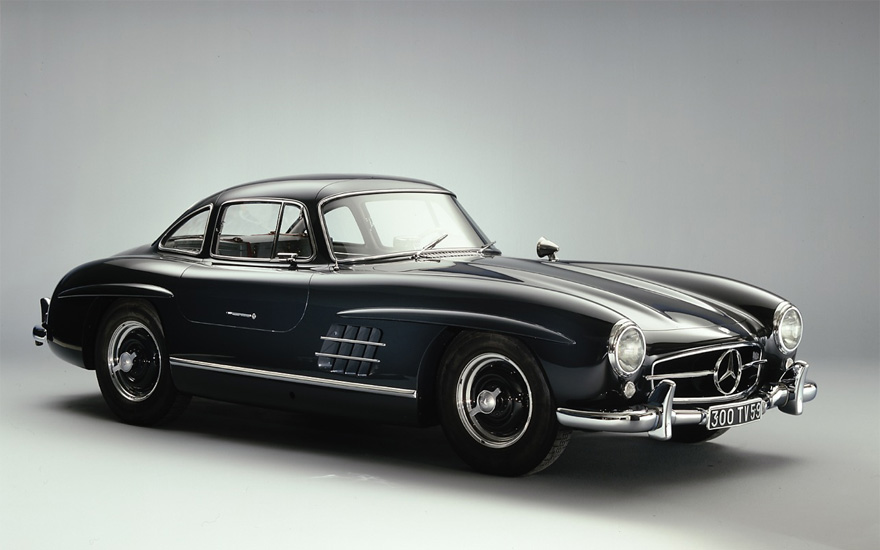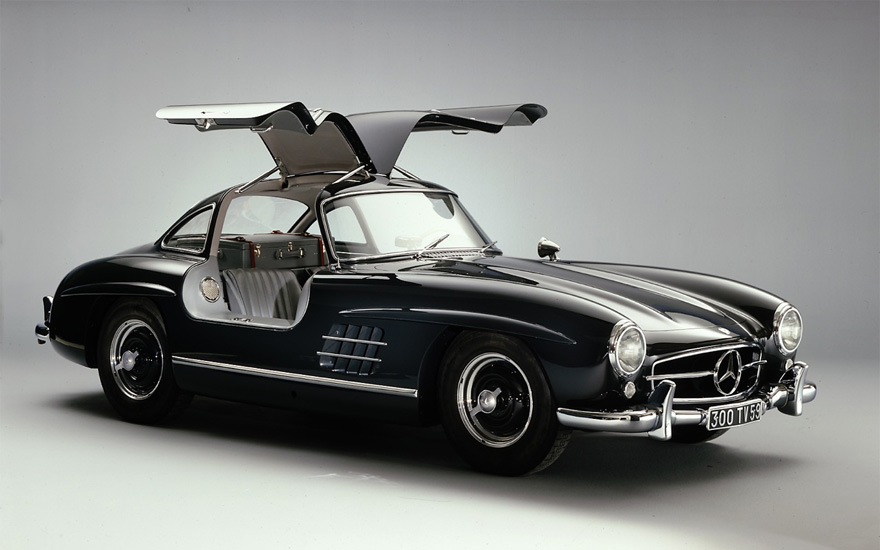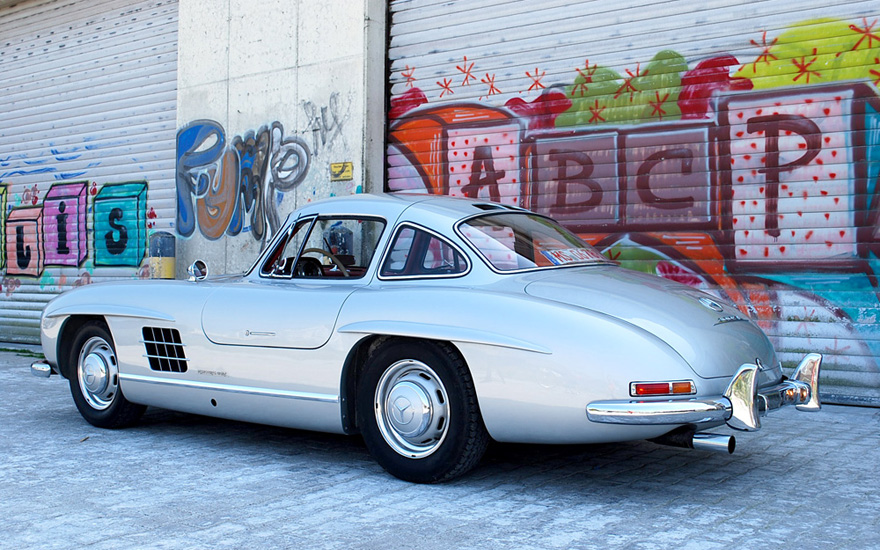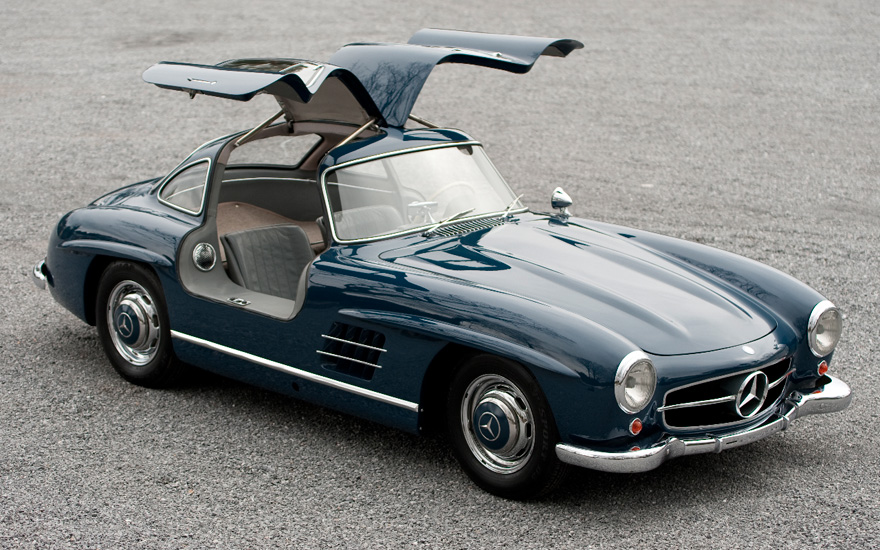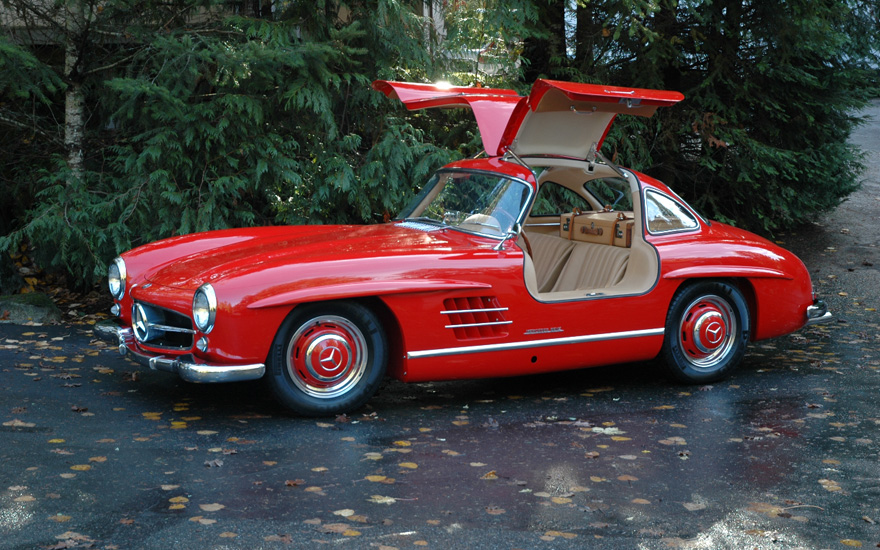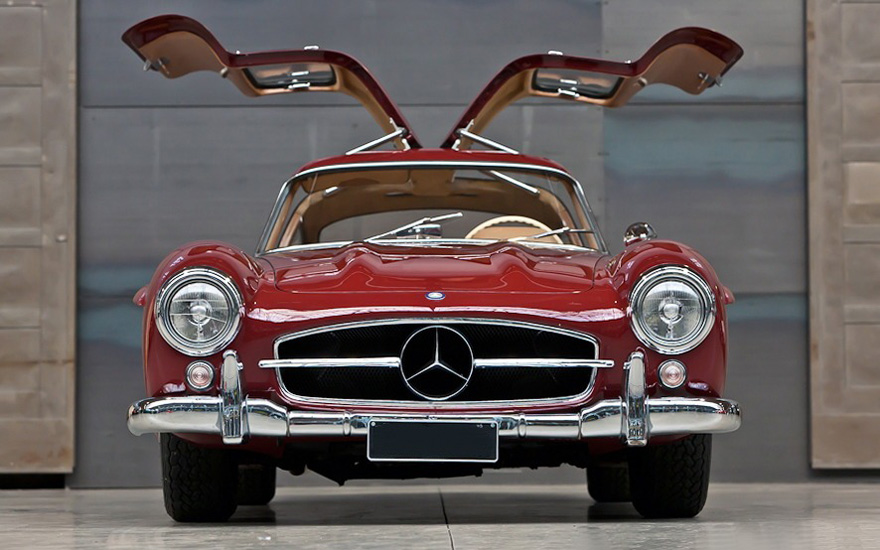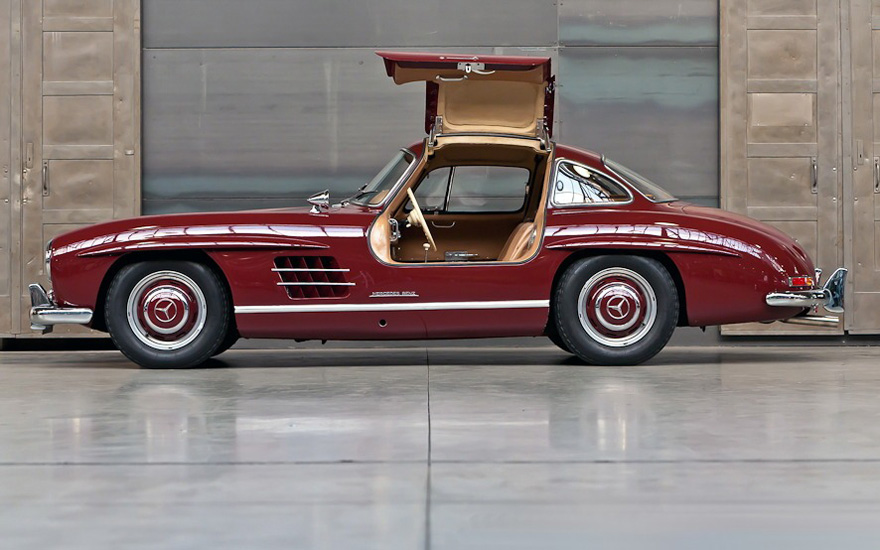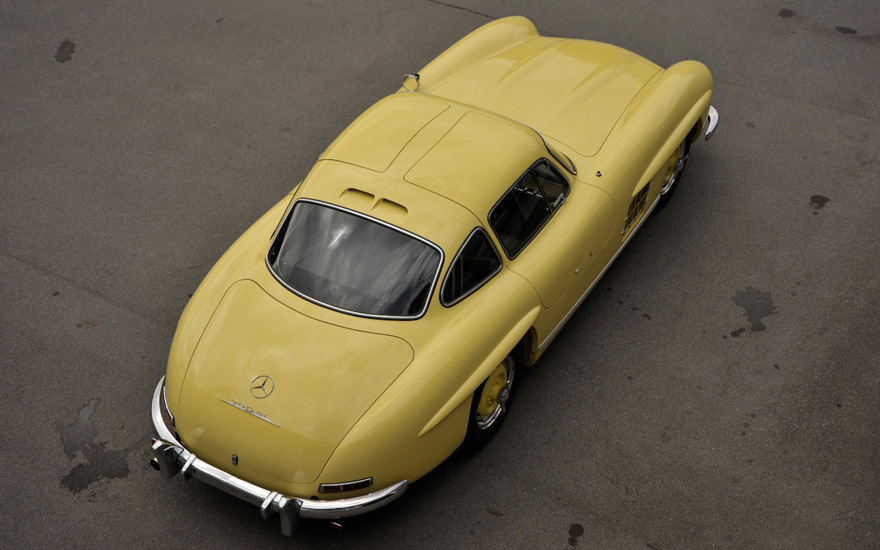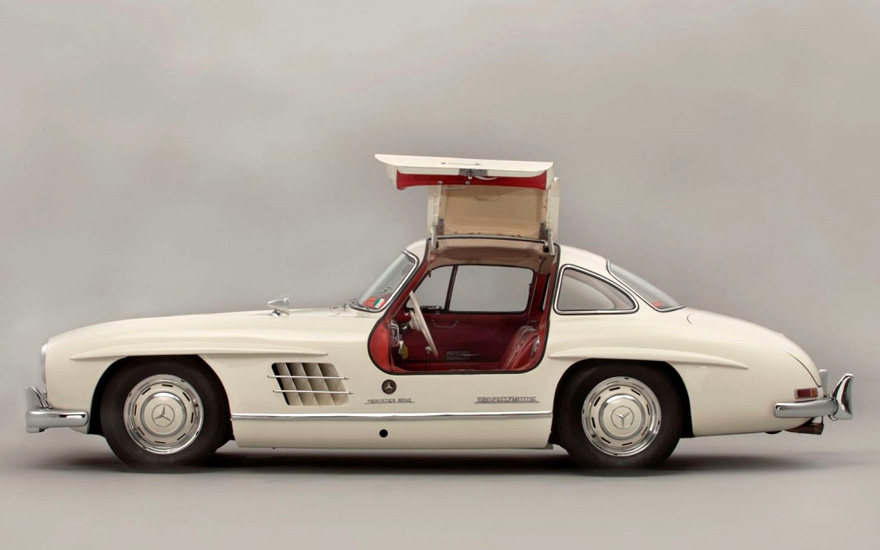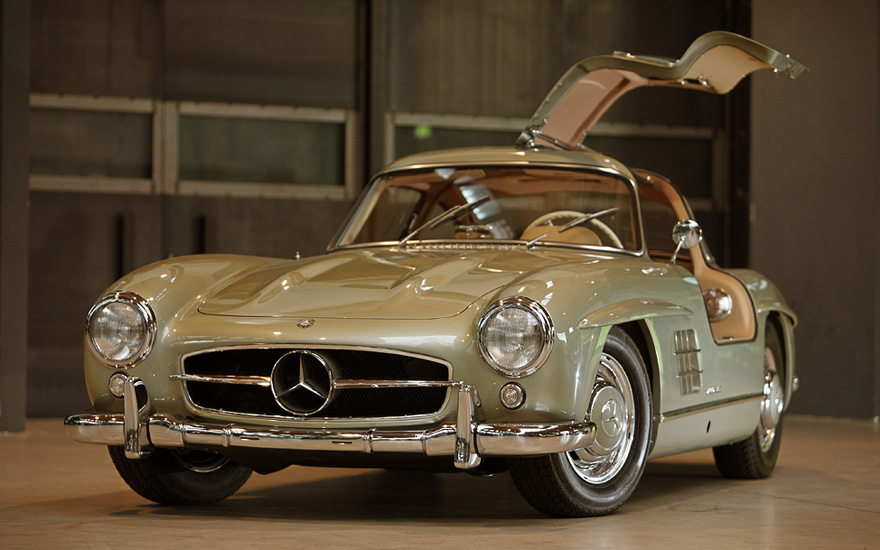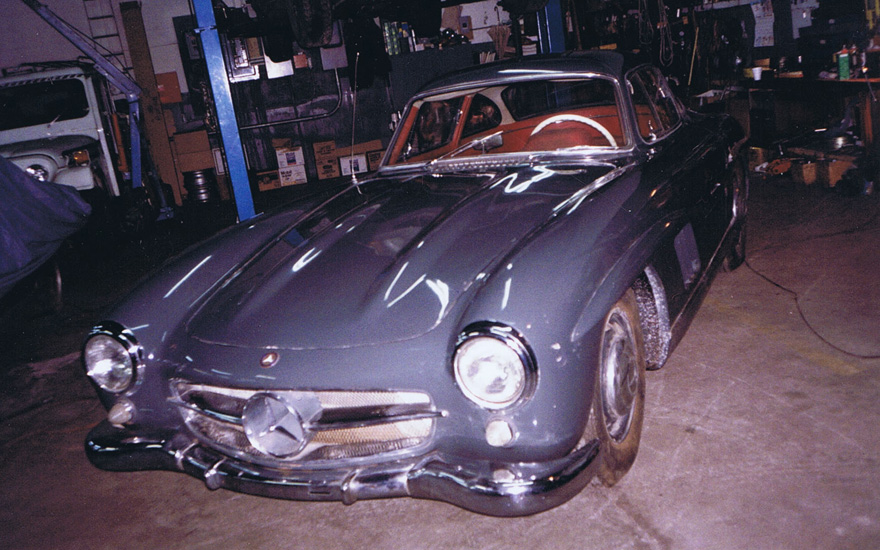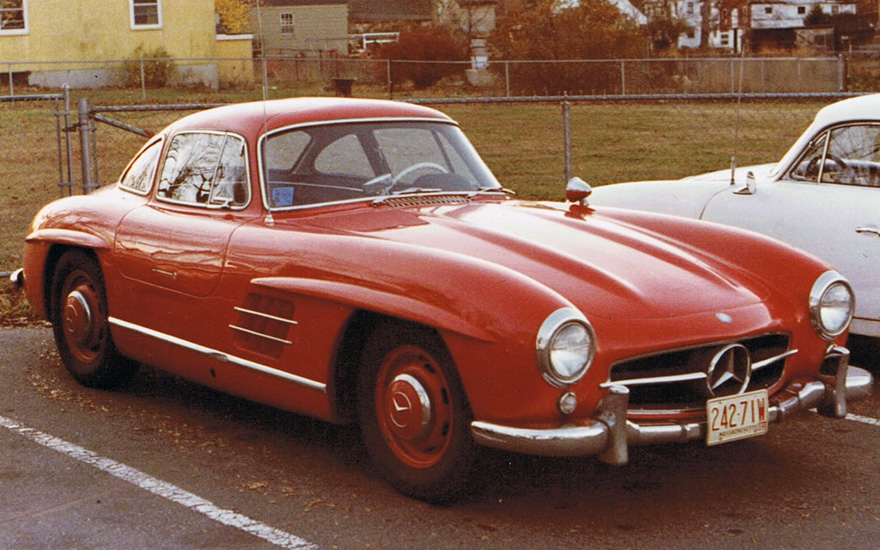REGISTER NO. 2 FOREWORD
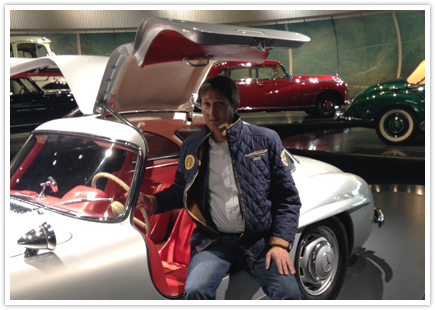
Eric Le Moine, Mercedes-Benz Museum – Stuttgart – Germany 2012
Six years after my first edition, I have the pleasure to present you the second edition of "The Mercedes-Benz 300 SL Gullwing Registry"
After having edited 100 samples of the first edition for the German Mercedes-Benz 300 SL Club in 1981, Hans Hürlimann trusted me in 2006 to realize my first edition. I want to thank him once more for allowing me to share his passion by writing this new registery.
There has been so many encounters, collectors , enthusiasts, of this legendary model. The will to share those stories, those tales, is still here. A few hours would have never been enough to say it all.
And then in 2010, I met Michael Bock at the Le Mans Classic. He gave me the much needed information I was looking for, which allowed me to give credibility to this project and continue with this adventure.
Research and incredible work with Jürgen Wittmann and Gerhard Heidbrink's team, archive departement at Mercedes-Benz Classic, it all allows me today to present you this new illustrated register . I hope it will help share our passion for this car unique in history, the Mercedes-Benz 300 SL.
Enjoy your reading!

Eric Le Moine
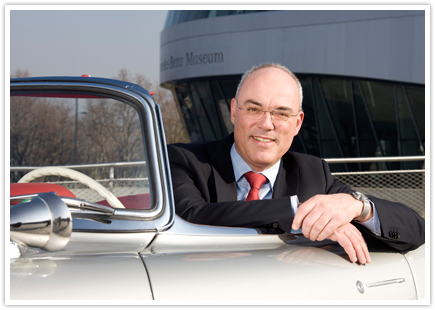
Michael Bock, Head of Mercedes-Benz Classic
Dear reader,
the 300 SL "Gullwing" is one of the most fascinating and most important vehicles in automobile history. This is not only due to this high-performance sports car's roots in racing, but also to its breathtakingly beautiful form with the unusual gullwing doors.
The trade press has been enthusing about it since 1954 and from the very beginning the gullwing model was an extremely popular collector's item. Fan clubs specialising in this fascinating model were quickly founded.
Enthusiasts who had fallen particularly deep under the spell of the 300 SL published the first registers in 1978 and for their members they issued compilations of the 1400 vehicles that had been built which contained the most important delivery data and a history of ownership.
Eric Le Moine made his register available to a larger circle of interested parties in 2006. This second edition thereof marks the beginning of a new phase: the new edition contains new and more current information whilst the photo material collected by Eric Le Moine complements the work with a further dimension. Thus this register reflects the continued high degree of interest and the increasing expectations of collectors with regard to quality, originality and individual history of the vehicles. At the same time, it provides transparency as the basis for authenticity – attributes which are not only highly regarded in collecting circles, but which are also values central to Mercedes-Benz Classic.
In this regard, there is a particular focus on the subject of originality. In view of the increasing value of the W 198 and the limited number of produced vehicles, it is even more important to ensure transparency. This register is a decisive help here.
In the light of this, I wish the 300 SL Register a successful futurse. Dear reader, I wish you interesting insights and a great deal of enjoyment whilst you browse the pages. Allow yourself to be inspired over and over again by the 300 SL – one of the most fascinating and most important vehicles in automobile history.
With very best wishes

Michael Bock
Head of Mercedes-Benz Classic
REGISTER NO. 2 INTRODUCTION
At the New York Motor Sports Show in February 1954, the unveiling of the Mercedes-Benz 300 SL amazed industry experts and the general public alike. Mercedes had already caused a sensation two years earlier when it launched its first racing car since before the Second World War.The 300 SL racing car was successful right from the start: on its race debut in May 1952 it finished in second place at the Mille Miglia, the legendary thousand-mile race across Italy. This was followed by four victories in four races, which included two double victories, one triple victory and one quadruple victory. The racing triumphs, and in particular the double victory at the Carrera Panamericana – a gruelling trek of more than 3000km across Mexico – caught the attention of Mercedes-Benz's main importer to the USA. Max Hoffman managed what no one had thought possible: he persuaded the Daimler-Benz board in Stuttgart to bring the 300 SL to market as a production sports car.
The distinctive upward-swinging doors, a feature necessitated by the innovative tubular space frame, earned this handsome vehicle the nickname 'gullwing' or 'papillon', and generated just as many headlines as its breathtaking performance. The W 198 (the internal designation for the 300 SL series sports car) was a genuine milestone, not least because of its innovative fuel injection system. As the first series production vehicle fitted with a four-stroke engine, it boasted advanced fuel management technology that improved both performance and efficiency.
The automotive press were in raptures. In January 1955 British journalist John Bolster wrote in Autosport: "The Mercedes-Benz 300 SL is a car of beautiful appearance and almost incredible performance. Its construction and finish are of the very highest class, and its whole design represents a technical tour de force. It has perfect traffic manners, and the sheer joy of handling it on the open road has to be experienced to be believed. There are other cars which are kinder to the less experienced driver, but for the man who is competent to exploit its full performance, this is one of the world's greatest cars."
Heinz Ulrich Wieselmann, editor-in-chief of auto, motor und sport, wrote even more enthusiastically about the car in October 1955: "This really is one of the most astonishing series-production cars that has ever been built anywhere in the world. It is the story of a thoroughbred sports car that emerged from the constituent elements of a prestige saloon – that itself was not even particularly spirited – and that caused a sensation on the racetracks of two continents when it left the competition trailing in its wake. That was in 1952; the SL disappeared after a highly successful racing season and more than two years passed before it suddenly reappeared as a refined sports car, now in series production and with 25 per cent more engine power. A racing sports car? The Mercedes racing team call it a 'boudoir on wheels'. One can saunter along the boulevards at the pace of a cyclist, barely making a noise – in the exact same gear with which the car effortlessly reaches the speed of a sports aircraft. [...]"
The 300 SL quickly became the ultimate dream sports car – admired by many but driven by only a few. This was largely due to its price of 29,000 Deutschmark, a sum of money which in 1954 could buy you six VW 1200 Beetles or three Mercedes-Benz 180s. Nevertheless, by the end of December 1955, more than 1000 vehicles had rolled off the production line, 930 of which were exported – a remarkably high proportion even for an export heavyweight such as Mercedes-Benz.
A total of 1400 units of the 300 SL were built at Sindelfingen between August 1954 and May 1957, including 29 with a light-alloy body and one experimental car with a plastic body. Because of their rarity, the light alloy gullwing models, approx. 70 kilograms lighter and originally developed for customers with motor sport aspirations, are afforded iconic status today.
Whether with a steel or light alloy body, the 300 SL production sports car was also triumphant in the world of motorsport: John Fitch / Kurt Gessl drove it to victory in the GT category at the Mille Miglia in May 1955, and in the same year Werner Engel won the European Rally Championship at the wheel of a 300 SL. In the USA, Paul O'Shea clinched the class D title at the 1955 National Sports Car Championship in a gullwing, a title he would successfully defend in 1956. The 300 SL even chalked up two victories in the Liege-Rome- Liege rally – a punishing long-distance route covering more than 5000km: in 1955 with the Belgian team Olivier Gendebien / Pierre Stasse and in the following year with Willy Mairesse / Willy Génin, also from Belgium.
At the Geneva Motor Show in March 1957, Mercedes-Benz unveiled the roadster version of its high-performance sports car as a successor to the gullwing coupé. Max Hoffman saw huge sales potential for this vehicle in the US market. Modification of the tubular space frame had made it possible to accommodate normal doors, the basic requirement for an open-top variant.
Gullwing or roadster? Deciding which of the two variants of the 300 SL is the more attractive is ultimately a question of individual taste.
The allure of the 300 SL gullwing endures to this day. Not only was it was voted 'sports car of the century' by an international panel of judges in December 1999 but it also regularly commands high prices on the collectors' market.
Editor-in-chief Heinz Ulrich Wieselmann perfectly sums up the character of the 300 SL in the aforementioned issue of auto, motor und sport: "The SL is a sports car with all the attributes of a luxury vehicle, boasting almost unbelievably high performance but with the most refined of urban manners – a shining example of the capabilities and engineering spirit of the world's oldest automotive factory. It is a dangerous car – dangerous in the sense of how a great love can be dangerous or a noble beast that one has tamed without breaking its will. Among the sports cars of our time the Mercedes-Benz 300 SL is the most refined and the most alluring – a dream of a car." After that, what more needs to be said?

